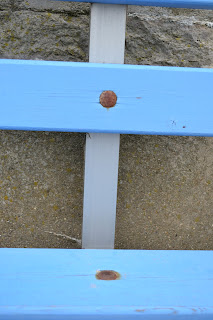Did God create the universe and everything in it or is it another mystery amongst many others? The world is so intricate and so detailed... how else could something so precious be created out of nothing? I set myself a task to photograph aspects of God, this could lead into many different ideas for example: nature, creation, landscape, wildlife, church, bible, and so on. So below are images of which I took of nature and wildlife to show how good God is and how wonderful his creations are.

"God's heart.." Mystery and imagination or Truth? These four images centre around landscape and nature; they show beauty, space and colours.


These images below focus on the wildlife aspect of God and creation. While out in Compton Acres, I photographed all the wildlife possible in order to get many photos of the aspects of creation: sun, sea, wildlife, nature and so on.
I especially like these four photos below as they show a kind of character to the specific animal it is, and for me-- if there was no God how can such wildlife be such an amazing creation? nothing cannot make such complex beings.

I picked these images below especially from the selection I photographed, as I thought that the colours and focus on the images showed the richness of the petal colours as well as the focus working well to highlight the main subject of the image.
Also the images below were the most appropriate to link with UTA BARTH'S images, as her photos were common with unfocused background and occasional foreground. I took this into account when photographing, so my outcome could be linked and very similar to her idea.
A perfect example of an artist which has focused around mainly nature and landscape paintings is CLAUDE MONET.
These four images are just a few examples from a large collection of Monet's work.
It links perfectly with my idea of God and creation.



Working from nature was a particular hallmark of the Impressionist movement, and one that Monet embraced, reflecting in his paintings the ever-changing impact of light and weather conditions. He was the most committed to recording the effects of light and atmosphere. His goal was to capture temporary phenomenon, and this was pursued in an efficient manner, yet the result was often a sheer celebration of painting itself, an expression of Monet's delight in the colours, textures, and shapes of the landscape. From about 1890 he began to paint a series of pictures of one subject, including 'Haystacks', 'Rouen Cathedral' and 'Waterlilies', as well as the likes of the Seine at Giverny, and views of the Thames and the Houses of Parliament. But Monet's key subject was the lily pond. These paintings show the life and the complexity of Monet's brushwork at it's highest. Sky, water, and vegetation are transformed into swirling, and vibrant masses of colour.





 When photographing men with beards I still found it quite difficult to approach strangers randomly, but the ones I did were nice about it although I think they thought I was joking and a bit strange. But after a quick explanation, they were fine with it. The first man had a very interesting character to him, as he was growing his beard, and in his own words said 'I know, I'm starting to look like a tramp'. I wanted to complete this task as it continues to help boost confidence with communicating to strangers as well as going out my comfort zone and experimenting more. So far for my exam I have centred my images around creation and nature; which is my whole idea, but I felt I needed to go an extra mile and add more variety to my images. And this task suited perfectly, as it links well to my overall idea of the Mystery of God and whether Jesus himself is a mystery or real.
When photographing men with beards I still found it quite difficult to approach strangers randomly, but the ones I did were nice about it although I think they thought I was joking and a bit strange. But after a quick explanation, they were fine with it. The first man had a very interesting character to him, as he was growing his beard, and in his own words said 'I know, I'm starting to look like a tramp'. I wanted to complete this task as it continues to help boost confidence with communicating to strangers as well as going out my comfort zone and experimenting more. So far for my exam I have centred my images around creation and nature; which is my whole idea, but I felt I needed to go an extra mile and add more variety to my images. And this task suited perfectly, as it links well to my overall idea of the Mystery of God and whether Jesus himself is a mystery or real.



























 She took cross images from other photographers and artists to create a book of them all. The ones I selected above are some of the most predominant images from the book that I thought linked well with my Cross task and God.
She took cross images from other photographers and artists to create a book of them all. The ones I selected above are some of the most predominant images from the book that I thought linked well with my Cross task and God.

















